California Fires Rage Out of Control: What You Need to Know NOW!
A huge wildfire has swept through a wealthy neighborhood, forcing thousands of people to flee their homes. Despite the destruction, some residents have refused to evacuate, ignoring official warnings.
Wildfires have caused severe damage across Southern California, and experts say the situation could get worse. On January 7, strong winds made the fires worse, leading to the evacuation of over 30,000 people from Los Angeles.
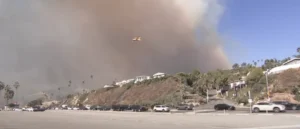
The fires in Pacific Palisades and Pasadena areas were not under control, with winds expected to reach speeds of up to 100 miles per hour. This posed a huge threat, especially overnight.
The Palisades fire spread quickly, burning over 2,900 acres near downtown Los Angeles. On January 7, the fire doubled in size in just three hours. Meanwhile, another fire started to the east in Eaton Canyon, near the San Gabriel Mountains above Altadena. Known as the Eaton fire, it burned 1,000 acres by nightfall.
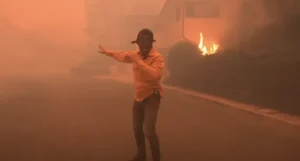
Another fire, the Hurst fire, spread to 100 acres in Sylmar, a suburb of San Fernando Valley, causing further evacuations as the flames threatened homes.
As the fires continue to spread, authorities have issued evacuation orders for many areas. An evacuation center has been set up at the Westwood Recreation Center in Los Angeles to help people who have been forced to leave their homes.
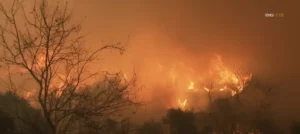
The damage is still being assessed. Los Angeles Fire Chief Kristin M. Crowley said several buildings in Pacific Palisades were damaged, but it is unclear how many. Officials reported that the Palisades fire is threatening over 10,000 households and 13,000 structures, while the Eaton fire is putting at least 550 homes in danger.
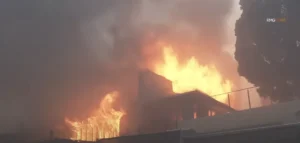
Firefighters are working hard to control the fires, but the situation remains dangerous. The Eaton fire, which started in Altadena north of Pasadena, has grown to 1,000 acres in just six hours. Both the Palisades and Eaton fires are still not contained.
Firefighters are facing worsening conditions as strong winds continue to blow, making it harder to contain the fires.
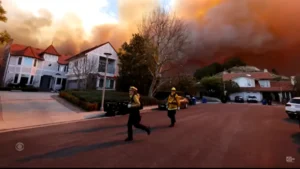
These fires have been made worse by extreme weather conditions, including strong winds reaching up to 100 miles per hour in some areas and very dry air. Overgrown vegetation, made worse by a lack of rain, has become highly flammable. Forecasters have warned that the fire conditions are as bad as they can get.
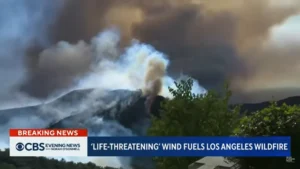
The winds, which come from Nevada and Utah, are fueling the fires. These Santa Ana winds have caused some of California’s worst wildfires in the past, including the 2018 fire that destroyed the town of Paradise.
The strong winds are expected to continue, which could cause the fires to spread even faster. Authorities have warned those who haven’t evacuated yet to be on high alert and prepared to leave if needed. People throughout Southern California are being told to stay cautious as new fires could break out.
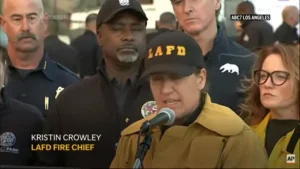
Governor Gavin Newsom has visited the affected areas and expressed concern about the destruction caused by the fires. He emphasized the importance of following evacuation orders to keep people safe.
Los Angeles Fire Chief Kristin Crowley said the situation is unprecedented and that the city is under a red flag alert. She reported that the fire had grown to 1,261 acres, and the high winds and difficult terrain are making it harder for firefighters to control the blaze.
Firefighting efforts were halted around 8 p.m. on January 7 due to strong winds that grounded aircraft. The operation is expected to resume when conditions improve. By 11 p.m., the fire was still not contained, and the flames were proving difficult to control.

Strong winds of up to 60 miles per hour are expected to continue until January 9, which will make it even harder for firefighters to control the flames.
UCLA climate scientist Daniel Swain warned that the fires are just beginning and are likely to get much worse before they get better.
The National Weather Service predicted that this windstorm could be the most destructive one to hit Los Angeles since 2011.
Southern California is facing one of its most challenging wildfire seasons in recent years, as extreme weather, dry conditions, and unpredictable winds continue to threaten lives, homes, and communities.
With thousands evacuated and firefighters working in hazardous conditions, officials are urging people to stay vigilant, follow evacuation orders, and be ready for fast-changing situations.
As the situation continues to develop, the strength and cooperation of the people affected will be essential in managing this difficult crisis.
